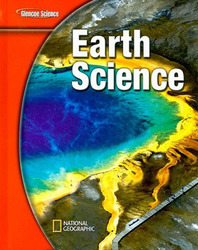1 A) They are the same things. B) Tornadoes occur over sea and hurricanes occur over land. C) Tornadoes occur over land and hurricanes occur over sea. D) Tornadoes happen during winter and hurricanes happen in the summer. 2 A) a front B) a hurricane C) a high pressure zone D) a storm 3 A) evaporation point B) relative humidity C) dew point D) saturation point 4 A) at a specific temperature B) over a long period of time C) at a specific time and place D) over a short period of time 5 A) high pressure B) Air moves from regions of high pressure to regions of low pressure. C) low pressure D) weather patterns 6 A) sunny weather B) approaching storms C) fair weather and rainstorms D) fog 7 cirro added to the suffix cumulus, cirrocumulus refers to __________.A) low, puffy, white clouds B) high, curly clouds C) high, puffy, white clouds D) middle-level, flat, even clouds 8 A) Relative humidity B) Humidity C) Saturation D) Air pressure 9 A) temperature B) wind speed C) atmospheric pressure D) humidity 10 A) strong updrafts of warm, moist air and sinking, rain-cooled air B) weak updrafts of warm, moist air C) rain-cooled air D) strong updrafts of dry air 11 A) Earth's revolution around the Sun B) the natural tendency of winds to blow from low to high pressure C) precipitation D) Earth's rotation 12 A) hail B) snow C) rain D) sleet 13 A) thunder B) a difference in wind direction and speed C) increasing rainfall D) similar wind speeds and directions 14 A) nimbostratus B) cumulonimbus C) cirrostratus D) nimbus 15 A) two B) an unknown number of C) four D) three 16 A) They help meteorologists predict dry weather. B) They help meteorologists tell how fast wind is blowing by noting how far apart isobars are placed on a weather map. C) They help meteorologists tell how fast wind is blowing by noting how closely isobars are placed on a weather map. D) They help meteorologists see areas of equal temperature. 17 A) fog B) puffy white clouds C) fibrous, or curly, clouds D) layers of even sheets in the sky 18 stationary front describes a front __________.A) that continues forward B) that changes C) that is present for a brief amount of time D) that stops advancing 19 A) air molecules B) small particles like dust and salt C) snow D) space 20 A) the arrangement of air molecules B) the direction of air molecules C) the composition of air molecules D) the average motion of air molecules














